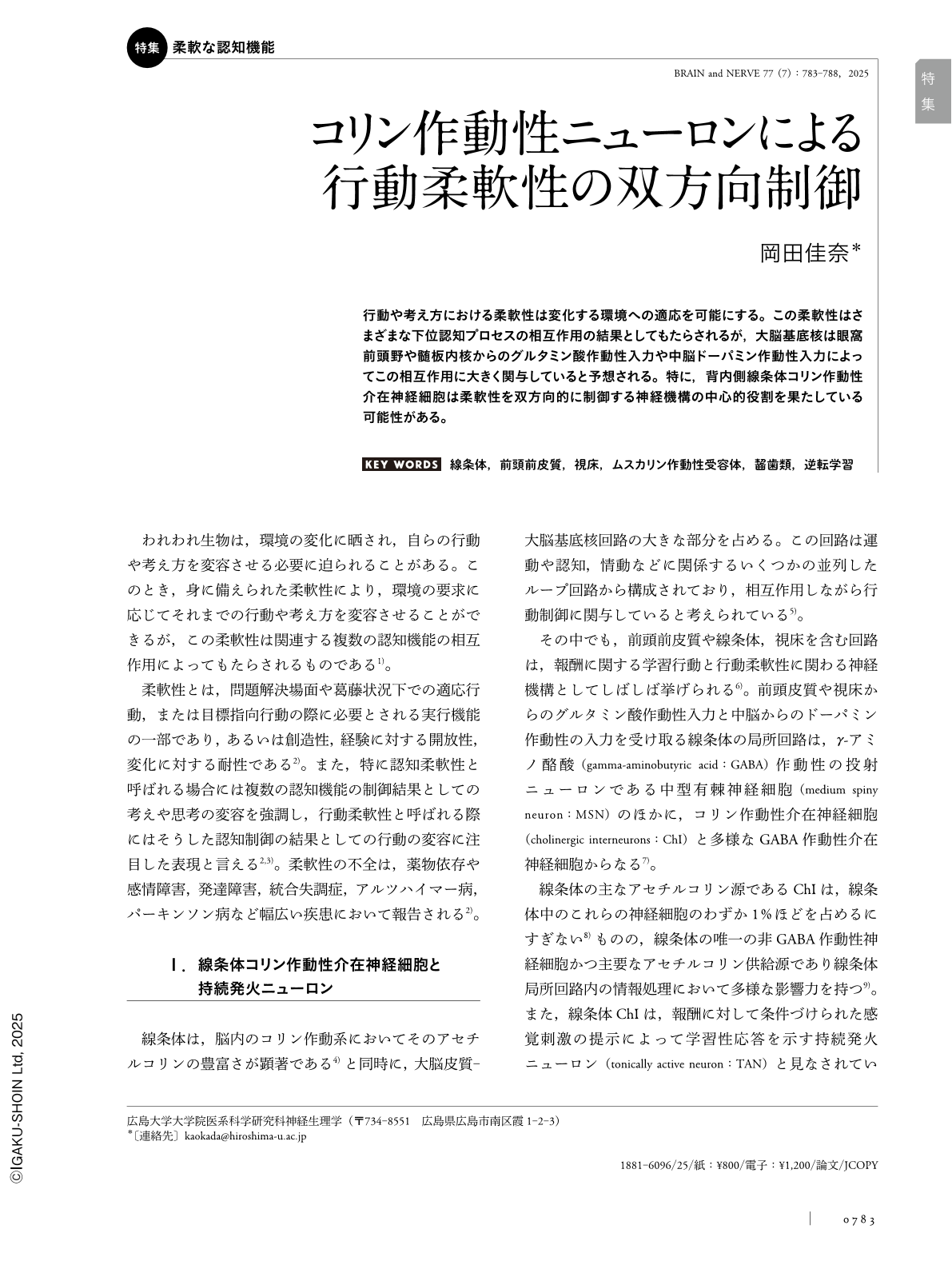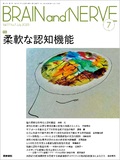Japanese
English
- 有料閲覧
- Abstract 文献概要
- 1ページ目 Look Inside
- 参考文献 Reference
行動や考え方における柔軟性は変化する環境への適応を可能にする。この柔軟性はさまざまな下位認知プロセスの相互作用の結果としてもたらされるが,大脳基底核は眼窩前頭野や髄板内核からのグルタミン酸作動性入力や中脳ドーパミン作動性入力によってこの相互作用に大きく関与していると予想される。特に,背内側線条体コリン作動性介在神経細胞は柔軟性を双方向的に制御する神経機構の中心的役割を果たしている可能性がある。
Abstract
Flexibility enables behaviors and thoughts to adapt to changing environments. The basal ganglia may play a critical role in the suppression and enhancement of flexibility by engaging in parallel and serial processing of several aspects of behavioral flexibility via afferent projections from related brain regions, such as the orbitofrontal cortex and intralaminar nucleus. Previous studies have suggested that the interactions between striatal cholinergic interneurons and these brain regions belong to a neuronal system that provides behavioral flexibility without interfering with existing learning and a new one regarding contingency, probably depending on glutaminergic and dopaminergic cholinergic inputs from the cerebral cortex, intralaminar nucleus, midbrain, and pedunculopontine nucleus. In particular, dorsomedial striatum cholinergic interneurons may exert bidirectional control of behavioral flexibility through neuronal dynamics among related brain areas that contribute to the cognitive subprocesses of flexibility.

Copyright © 2025, Igaku-Shoin Ltd. All rights reserved.


